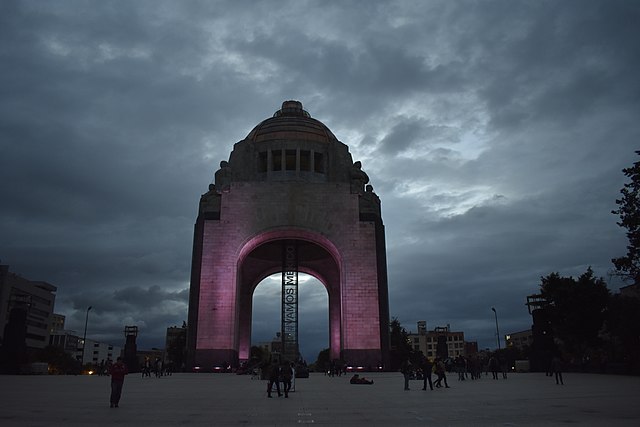
Among the most iconic symbols of Mexico City, the Monument to the Mexican Revolution is almost as complex and ambiguous as the historical event it’s today meant to commemorate. An unfinished architectural work, it was begun as the dome of a Palace for the Mexican Federal Legislature. Porfirio Diaz laid the first stone in 1910 (although the project had been planned since 1897). Diaz’s time remaining was very short though. He was ousted the following year after more than 31 years of near absolute power controlling the Mexican state.
Although the newly elected Francisco Madero funded the work until 1913, with Madero’s assassination and the beginnings of the second and most violent phase of the revolution now begun in earnest, the project languished. Although the revolution was more or less concluded by 1920, changes were so profound as to delay any resumption of the project for a further 13 years.
Architect Carlos Obregón Santacilia, proposed and won support for the idea of converting the now long abandoned structure into a monument to the heroes of the Mexican Revolution. Work began only in 1933. The result is a unique mix of Art Deco and Mexican Socialist Realism super-imposed over an existing and obviously Neo-classical cupola structure. The sculptor Oliverio Martínez designed four stone sculpture groups for the corners of the monument, including those allegorically representing Independence, the Reform Laws, Agrarian Law, and Labor Law. Martínez was assisted by a young
The monument and the subterranean museum also serve as a mausoleum for the fallen heroes of the Revolution. The monument is the final resting place for Francisco “Pancho” Villa, Francisco I. Madero, Plutarco Elías Calles, Venustiano Carranza, and Lázaro Cárdenas.
The museum below the monument also runs a surprisingly succinct and up-to-date schedule of exhibitions and events related to the revolution and to non-violence more generally.
Their calendar of events is kept up to date with happenings in the museum, although the surrounding plaza is very often as lively as any thing the heroes of the actual revolution would have hoped for. Visitors can also purchase tickets online in advance of arriving.
![]() The Turibus Historic Centre Circuit stops to the northeast of the monument, outside of the Frontón México.
The Turibus Historic Centre Circuit stops to the northeast of the monument, outside of the Frontón México.
Hours: Monday through Thursday: 12 p.m. – 8 p.m., Fridays & Saturdays: 12 p.m. – 10 p.m., Sundays: 10 a.m. – 8 p.m.
 info@mrm.mx
info@mrm.mx
 +52 (55) 5592 2038
+52 (55) 5592 2038
 http://www.mrm.mx/
http://www.mrm.mx/

Nearest at 0.01 kms.
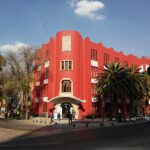
Nearest at 0.10 kms.
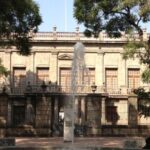
Nearest at 0.28 kms.

Polanco's luxury retail inclination...
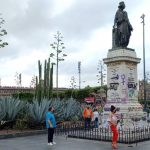
An important stop for Turibus and Capital Bus, it's more than just that...

Tlaloc's great move from EdoMex has never been forgotten.
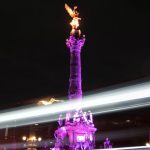
Likely the most prominent symbol of Mexico City, El Ángel is always at the center of things...
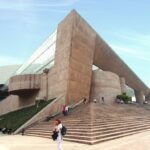
Mexico's national auditorium for performance, opera, and every kind of music...